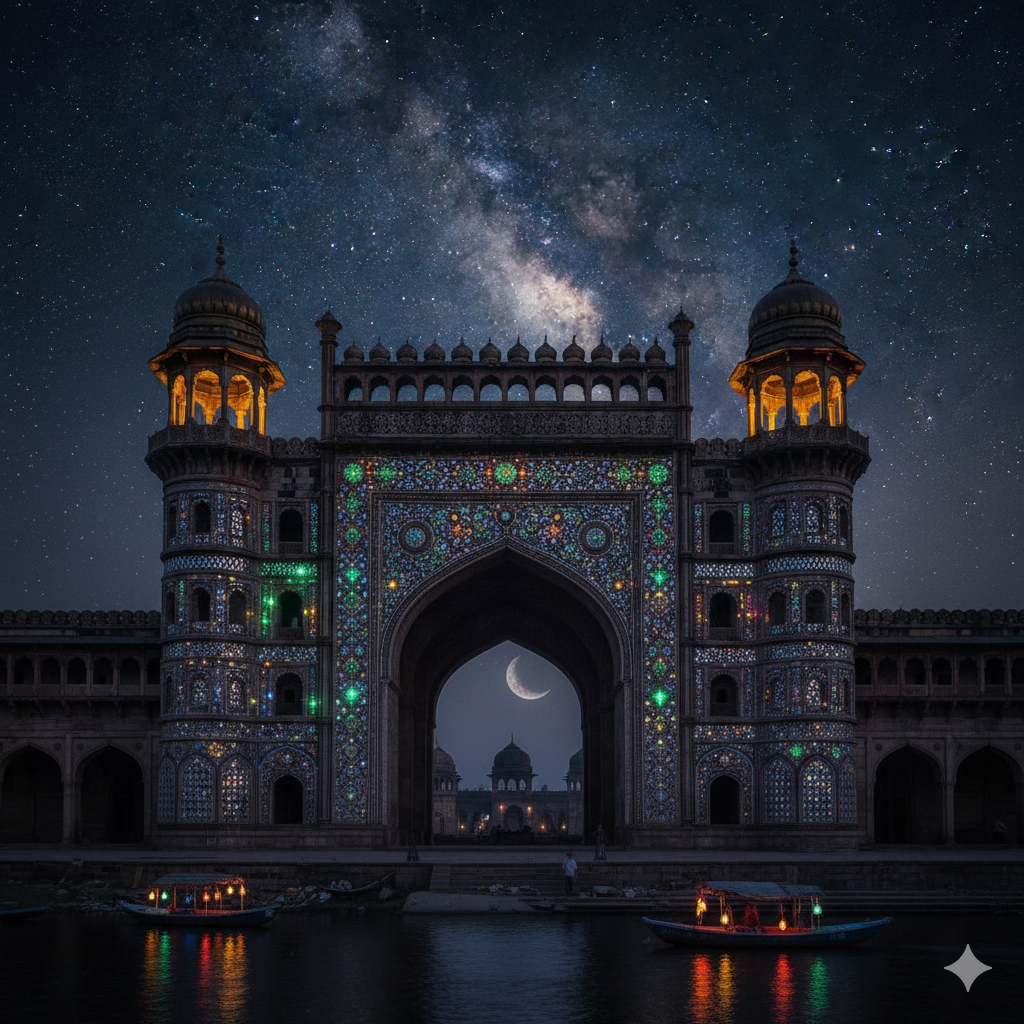Introduction
The state of Uttar Pradesh, located in the heart of the Gangetic plains, played a pivotal role in the religious and philosophical transformations of ancient India. During the period spanning 6th century BCE to 3rd century BCE, India witnessed the emergence of two major religious movements – Jainism and Buddhism – collectively referred to as Śramaṇa traditions. These movements arose as responses to ritualistic Vedic practices and sought to address moral, social, and spiritual questions through new frameworks of thought.
Uttar Pradesh became a central stage for these religious movements due to its fertile plains, urban centers, trade routes, and political stability under Mahajanapadas. Cities like Mathura, Kaushambi, Shravasti, Kushinagar, and Ayodhya emerged as hubs of religious activity, intellectual debate, and pilgrimage.
This article provides a detailed study of the major religious movements in Uttar Pradesh, emphasizing Jainism and Buddhism, their origins, key figures, philosophical doctrines, socio-cultural impact, spread, and long-term influence.
1. Historical Context of Religious Movements
1.1 The Śramaṇa Tradition
- Definition: A socio-religious movement emphasizing renunciation, asceticism, and ethical living, challenging the authority of the Vedas.
- Timeframe: Circa 6th–3rd century BCE.
- Key Features:
- Rejection of animal sacrifices and ritualism.
- Emphasis on self-discipline, non-violence (Ahimsa), and ethical conduct.
- Formation of monastic communities (sanghas).
1.2 Social and Political Context
- Urbanization: Growth of cities such as Kaushambi, Shravasti, and Mathura facilitated intellectual discourse and religious congregations.
- Mahajanapadas: States like Kosala, Vatsa, Malla, and Surasena provided political stability and patronage for religious leaders.
- Economic Prosperity: Trade and craft production supported the maintenance of monasteries and educational centers.
2. Jainism in Uttar Pradesh
2.1 Origins and Early Development
- Founder: Mahavira (Vardhamana), 24th Tirthankara of Jain tradition.
- Birthplace: Vaishali (Bihar), but Uttar Pradesh became significant for his preaching and discipleship activities.
- Timeframe: Circa 599–527 BCE (traditional dates).
2.2 Key Principles of Jainism
- Ahimsa (Non-violence): Non-harm to all living beings.
- Satya (Truthfulness): Strict adherence to truth in speech and conduct.
- Asteya (Non-stealing): Respect for others’ property.
- Brahmacharya (Celibacy or Chastity): Control over desires.
- Aparigraha (Non-possessiveness): Detachment from material wealth.
Jainism emphasized self-realization through ethical conduct, asceticism, and meditation.
2.3 Jain Religious Centers in Uttar Pradesh
- Ayodhya:
- Associated with Tirthankara teachings and early monastic establishments.
- Pilgrimage site and center for local Jain communities.
- Mathura:
- Served as a hub for Jain monks and scholars.
- Patronage from merchant guilds facilitated construction of temples and monasteries.
- Kaushambi:
- Known for Jain congregations and monastic activities.
- Important in disseminating Jain ethical and philosophical ideas.
2.4 Social and Cultural Impact of Jainism
- Ethical Influence: Reinforced non-violence, honesty, and social responsibility among urban populations.
- Art and Architecture: Early Jain stupas, sculptures, and inscriptions appear in UP.
- Education: Monastic institutions served as centers for philosophy, mathematics, and logic.
- Trade and Economy: Merchant classes actively patronized Jain establishments, fostering urban prosperity.
2.5 Jain Monastic Organization
- Formation of sanghas (monastic communities).
- Monks traveled for preaching, teaching, and meditation.
- Structured hierarchy with Acharyas, Upadhyayas, and Sadhus ensured doctrinal continuity.
3. Buddhism in Uttar Pradesh
3.1 Origins and Early Development
- Founder: Gautama Buddha, born circa 563 BCE in Lumbini (modern Nepal).
- Early Life: Prince of the Shakya clan, renounced worldly life to seek liberation from suffering.
- Timeframe: Active circa 6th–5th century BCE, with teaching career primarily in Kosala, Vatsa, and Malla regions of Uttar Pradesh.
3.2 Key Principles of Buddhism
- Four Noble Truths: Understanding suffering (dukkha) and its cessation.
- Eightfold Path: Ethical conduct, meditation, and wisdom for liberation.
- Middle Path: Avoid extremes of indulgence and asceticism.
- Non-violence and Compassion: Emphasis on Ahimsa and care for all living beings.
Buddhism emphasized practical ethics, mindfulness, and community-oriented spiritual life.
3.3 Buddhist Religious Centers in Uttar Pradesh
- Shravasti (Kosala):
- Buddha spent 19 rainy seasons here, delivering significant sermons.
- Key monasteries: Jetavana Monastery.
- Important for monastic training and community organization.
- Kaushambi (Vatsa):
- Patronized by King Udayana, who supported Buddhist monks.
- Served as a center for teachings and debates.
- Infrastructure for stupas and meditation halls developed.
- Kushinagar (Malla Republic):
- Site of Mahaparinirvana (Buddha’s passing).
- Became a major pilgrimage and monastic center.
- Mathura (Surasena):
- Urban trade center supporting Buddhist communities and artistic traditions.
- Flourishing of terracotta sculptures, coins, and monastery constructions.
3.4 Socio-Cultural Impact of Buddhism
- Religious Reform: Offered alternative to ritualistic Vedic practices.
- Social Equality: Encouraged inclusion of lower castes and women in religious life.
- Education and Learning: Monasteries became centers for philosophy, logic, medicine, and literature.
- Art and Architecture: Development of stupas, chaityas, and monastic complexes; early Buddhist sculpture in Mathura.
3.5 Monastic Organization
- Formation of sanghas (monastic communities) with monks (bhikkhus) and nuns (bhikkhunis).
- Governance based on Vinaya (monastic rules).
- Monks traveled for preaching, meditation, and social welfare, often supported by royal patronage.
4. Interaction between Jainism and Buddhism
- Both movements arose in response to Vedic orthodoxy.
- Shared features:
- Emphasis on non-violence (Ahimsa).
- Formation of monastic communities (sanghas).
- Advocacy of ethical living and renunciation.
- Differences:
- Jainism emphasized strict asceticism and multiple lifetimes (karma).
- Buddhism focused on Middle Path, practical ethics, and alleviation of suffering.
- In Uttar Pradesh, both traditions influenced urban society, trade ethics, and educational institutions.
- Cities like Mathura and Kaushambi witnessed coexistence and intellectual debate between Jain and Buddhist communities.
5. Role of Uttar Pradesh’s Urban Centers in Religious Movements
- Trade and Wealth: Merchant patronage supported temples, monasteries, and educational institutions.
- Political Support: Kings of Kosala, Vatsa, and Malla republics sponsored religious leaders and infrastructure.
- Connectivity: Rivers and roads facilitated pilgrimage, teaching tours, and dissemination of ideas.
- Cultural Synthesis: Interaction with local traditions, Vedic practices, and tribal beliefs enriched both religions.
6. Major Contributions of Uttar Pradesh in Religious Movements
| Aspect | Jainism | Buddhism |
|---|---|---|
| Monastic Centers | Mathura, Kaushambi, Ayodhya | Shravasti, Kaushambi, Kushinagar, Mathura |
| Key Figures | Mahavira and early disciples | Gautama Buddha and his disciples |
| Philosophical Innovations | Ahimsa, Aparigraha, Self-realization | Middle Path, Four Noble Truths, Eightfold Path |
| Cultural Impact | Temples, terracotta, inscriptions | Stupas, monasteries, sculptures, pilgrimages |
| Social Reform | Ethical living, renunciation | Inclusivity, education, compassion |
| Economic Support | Merchant guilds | Royal patronage and urban wealth |
7. Art, Architecture, and Literary Contributions
- Jain Art: Early temples, shrines, terracotta icons, and inscriptions.
- Buddhist Art: Stupas at Kushinagar and Kaushambi; Mathura school of art produced early Buddha images.
- Literature: Jain Agamas and Buddhist Sutras were compiled and disseminated in urban centers.
- Influence on Later Traditions: Both religions influenced medieval temple architecture, philosophical thought, and urban planning.
8. Long-term Influence
- Religious Pilgrimage: Uttar Pradesh became a major pilgrimage hub for Buddhists and Jains.
- Educational Legacy: Monastic institutions influenced centers of learning in medieval India.
- Cultural Integration: Contributed to ethical, philosophical, and artistic development in Indian civilization.
- Influence on Governance: Concepts of community-based ethics, councils, and social responsibility reflected in local governance.
9. Challenges and Decline
- Political Instability: Later invasions and dynastic changes affected religious centers.
- Competition with Brahmanical Traditions: Reassertion of Vedic orthodoxy led to reduced patronage.
- Urban Transformation: Some ancient urban centers declined or shifted locations.
- Preservation Issues: Archaeological and textual evidence requires careful conservation and study.
Despite these challenges, the legacy of Jainism and Buddhism in Uttar Pradesh remains enduring, shaping philosophy, art, and culture for centuries.
Conclusion
Uttar Pradesh played a central role in the religious and cultural transformations of ancient India, serving as the birthplace, propagation center, and pilgrimage hub for Jainism and Buddhism. Key contributions include:
- Urban Centers as Religious Hubs: Shravasti, Kaushambi, Kushinagar, Mathura, and Ayodhya.
- Philosophical Innovation: Ethical, social, and spiritual frameworks challenging Vedic orthodoxy.
- Monastic Organization: Sanghas providing structured spiritual communities and education.
- Art and Architecture: Development of temples, stupas, sculptures, and inscriptions.
- Socio-Economic Impact: Merchant and royal patronage enabled sustainable religious and cultural growth.
The Śramaṇa movements of Jainism and Buddhism significantly shaped Indian civilization, influencing religion, philosophy, education, art, and governance. Uttar Pradesh’s contribution illustrates the interplay between geography, urbanization, political stability, and religious innovation, making it a key region in India’s ancient spiritual history.




